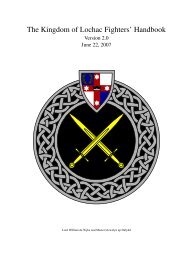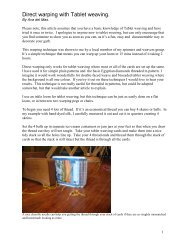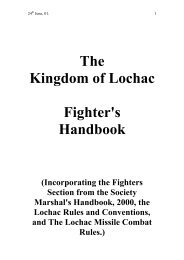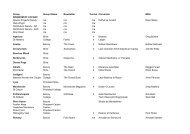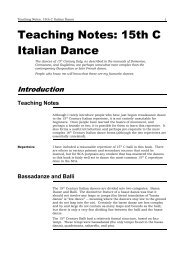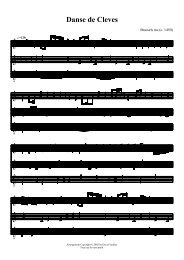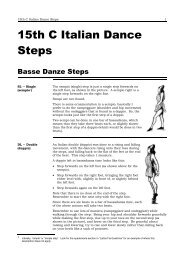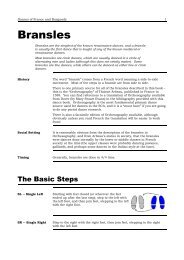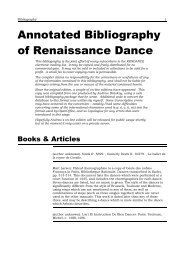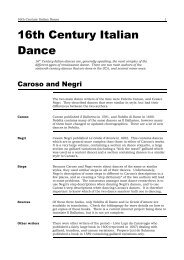Annotated Bibliography of Renaissance Dance - Shadow Island ...
Annotated Bibliography of Renaissance Dance - Shadow Island ...
Annotated Bibliography of Renaissance Dance - Shadow Island ...
- No tags were found...
Create successful ePaper yourself
Turn your PDF publications into a flip-book with our unique Google optimized e-Paper software.
<strong>Annotated</strong> <strong>Bibliography</strong> <strong>of</strong> <strong>Renaissance</strong> <strong>Dance</strong> 31Negri, Cesare Negri, Cesare. Le Gratie D'amore. New York: Broude Brothers, 1969.Reprint <strong>of</strong> Le Gratie D'amore, 1602.Negri, CesareNegri, Cesare, and Kendall, Gustavia Yvonne. "Le Gratie D'amore" 1602 ByCesare Negri: Translation and Commentary. University Micr<strong>of</strong>ilmsInternational, dissertation (Stanford University), 1985.Reprint <strong>of</strong> Le Gratie D'amore, 1602.Matt Larsen: Kendall's translation is a very valuable volume, since it <strong>of</strong>fersboth a facsimile <strong>of</strong> the original and a translation. Thus, whenreconstructing a dance, it is easy to refer to the original at any point, butthe work is also accessible to those who don't know Italian. The translationis not completely reliable, however, and some reference to the facsimileshould be made.Negri, Cesare Negri, Cesare. Le Gratie D'amore. Milan: 1602.Matt Larsen: Like the other Italian manuals <strong>of</strong> the sixteenth century, thisis a large volume <strong>of</strong> long and very difficult dances. In particular thisvolume includes a long discussion on galliard variations, and gives manygalliard steps, including steps used for the "kick the tassel" contest. Itshould be noted that Negri uses some <strong>of</strong> the same names as Caroso forwhat seem from the descriptions to be different steps, so one should usecare when reconstructing a dance to use the appropriate steps. Onaverage, the dances which Negri presents are more complicated than thosewhich Caroso <strong>of</strong>fers. That is, the simplest <strong>of</strong> Negri's dances is morecomplicated than the simplest <strong>of</strong> Caroso's; although the most difficultdances <strong>of</strong> each author are similar in complexityNelson Historical<strong>Dance</strong> SocietyNelson Historical <strong>Dance</strong> Society. The Fifteenth Century Base Danze andBallo. Nelson, England:Nelson Historical<strong>Dance</strong> SocietyNelson Historical <strong>Dance</strong> Society. <strong>Dance</strong> With Giorgio. Nelson, England:Nelson Historical<strong>Dance</strong> SocietyNelson Historical <strong>Dance</strong> Society. A Study <strong>of</strong> Two Fifteenth Century <strong>Dance</strong>s.Nelson, England:Nelson Historical<strong>Dance</strong> SocietyNelson Historical <strong>Dance</strong> Society. The Brando: A Sixteenth Century <strong>Dance</strong>Type. Nelson, England:Nelson Historical<strong>Dance</strong> SocietyNelson Historical <strong>Dance</strong> Society. Il Furioso. Nelson, England:Del (D.Elson): A thorough description <strong>of</strong> the steps, timings, and floorpatterns <strong>of</strong> Caroso's Furioso from Il Ballarino, and the three variations onit from Nobiltà di Dame.



